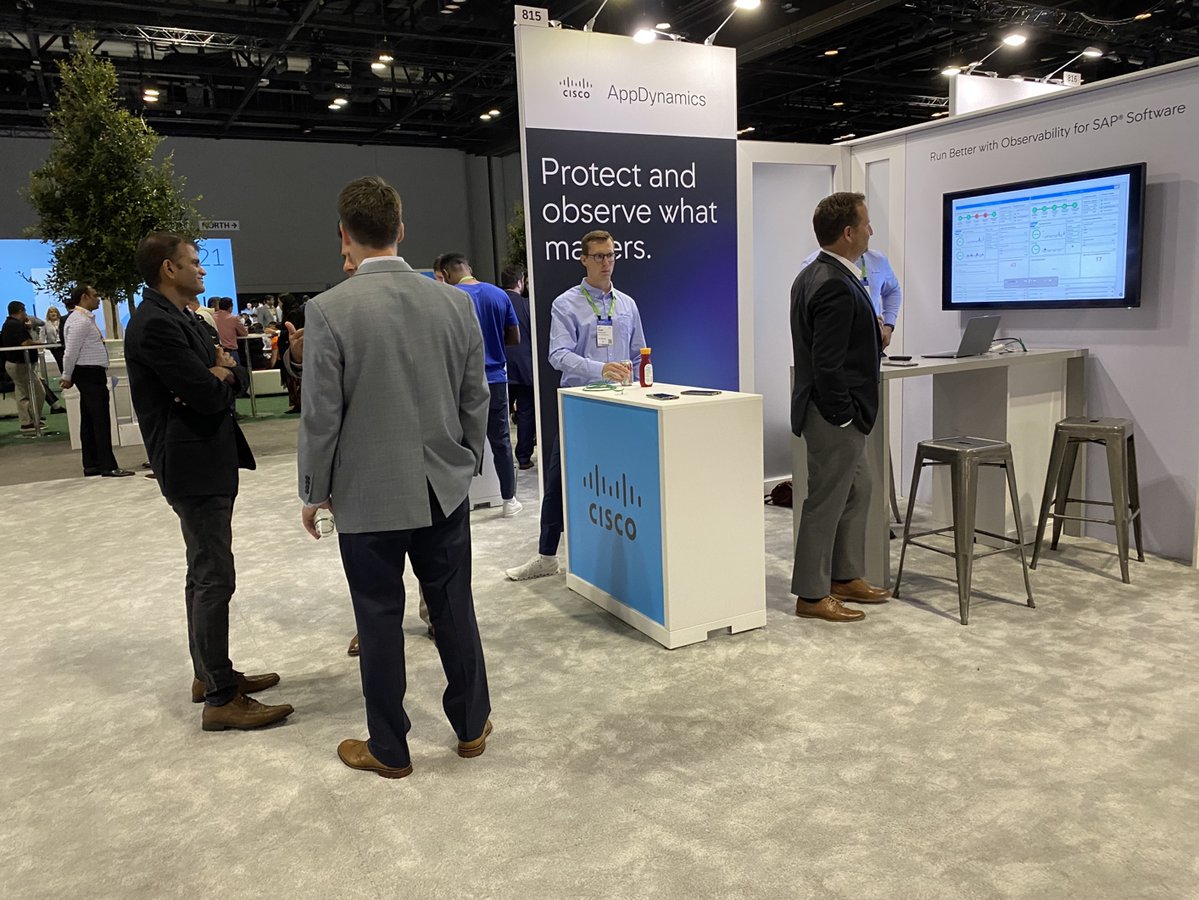- Forget Ring - Arlo's flagship battery-powered security camera is still on sale for $120
- These might be one of my favorite exercise earbuds -- and they're still on sale
- My Dyson Airwrap has replaced all my styling tools, and it's still on sale for close to its lowest price ever
- If Musk wants AI for the world, why not open-source all the Grok models?
- xAI's Grok 3 is better than expected. How to try it for free (before you subscribe)
Relevance of Observability for SAP and its cross-functional integrations

In the past, I have held many discussions on the critical value of the SAP application for businesses. Gartner estimates that 77% of all worldwide business transactions touch an SAP system. I saw first-hand the challenges faced managing SAP applications by businesses worldwide at the latest SAP Sapphire 2023 event in Orlando, FL. While this event at Orlando was limited to organizations predominantly headquartered and operating out of the Americas, many top global Fortune companies shared their stories on how their business runs on SAP and requires a large ecosystem of technology and consulting partners to maintain.
In light of this, the relevance of technology in driving business growth has never been this prominent. What we now refer to as “application is the new business” or “every company is a software company,” SAP has been doing for its customers for the past several years.
Insights from SAP Sapphire 2023
In my conversations with senior executives from our customer and partner organizations at the event, I learned about a variety of SAP projects that they are working on, ranging from upgrades to cloud migrations to integrations and to platform shifts. These projects are vital to support their companies’ business transformation and digital drives, but these deployments are large, complex, and heavily customized to support specific business requirements.
It is difficult to define and capture the complexity of these projects, so let’s depict an example environment of companies today. We start with a core application, i.e., SAP deployed in multiple regions, running numerous instances globally, and providing different functional capabilities of material management, sales, and distribution, supply chain, order to cash, finance, HR, and many more.
Along with these multiple instances of SAP, hundreds of upstream and downstream applications are integrated to provide various services to their customers & suppliers. On top of this, let us consider the complexity of cloud and hybrid deployments of these applications, newer digital interfaces, and the ongoing changes in organizations as they acquire or diversify the business.
Together, this creates an incredibly complex application landscape with numerous dependencies and potential failure points. These businesses need better insight into their IT stack to maintain performance and grow their business, but they lack that insight with traditional monitoring solutions.
Why Observability matters with SAP
While the event focused on newer initiatives, my conversations often discussed the cost of running the businesses as a major point of interest related to budgets for new initiatives. So how can we help our customers run their operations efficiently and maximize their investments?
This brings me to the current trends in Observability. While it is a need of the business, we often see our customers not including SAP when they create a roadmap for implementing Observability. Even 1% improvements in operational efficiency for SAP environments and its integrations with a wider eco-system can save customers multi-millions of dollars and provide the best experience to their end-users.
SAP has its native tool to manage the SAP operations, and a smaller part of its capabilities are around monitoring the SAP performance. Importantly, we must consider the integrated application estate and not only SAP in a silo. This native tool is not explicitly built to help customers with any form of Observability.
The Partner opportunity
This is a massive opportunity for partners to help their customers improve business productivity by bringing efficiency to their SAP operations and providing an integrated view of their business journeys across the SAP & non-SAP application stack.
Some key points partners can discuss with their customers on the importance of SAP and Observability are:
- Bring visibility of the SAP & Non-SAP world together. It is all about monitoring a business service and not a business application.
- Transform the SAP monitoring operations with a real-time view of the business journey and the customer experience. Business teams are looking for KPI dashboards and not post facto reports.
- Reduce the long resolution times and limit unplanned downtime or performance delays.
SAP has an extensive network of 21,000 partners, skilled in providing different services of consulting, functional deployment, process re-engineering, operations, and many more. Embedding the Observability aspect in the solution framework would be significant for customers in today’s digitally-obsessed world. From the customer journey, their experience, and the outcome to the business, is what they need on a real-time basis.
It leads to creating a new value-added service for the partners, unearths this greenfield opportunity on SAP Observability, and helps them differentiate their offerings.
- Differentiate their services on SAP support (AMS projects), Upgrades/Conversion, and SAP Cloud Migration.
- Industrialize the business process monitoring services to deliver faster value to their customers.
- Expand the engagement by transforming the SAP operations and creating incremental services opportunity for them.
As the old saying goes, “If you can’t measure it, you can’t manage it.”
So, let’s connect the dots around delivering SAP observability and help customers observe what matters to them.
We’d love to hear what you think. Ask a Question, Comment Below, and Stay Connected with #CiscoPartners on social!
Cisco Partners Facebook | @CiscoPartners Twitter | Cisco Partners LinkedIn
Share:

